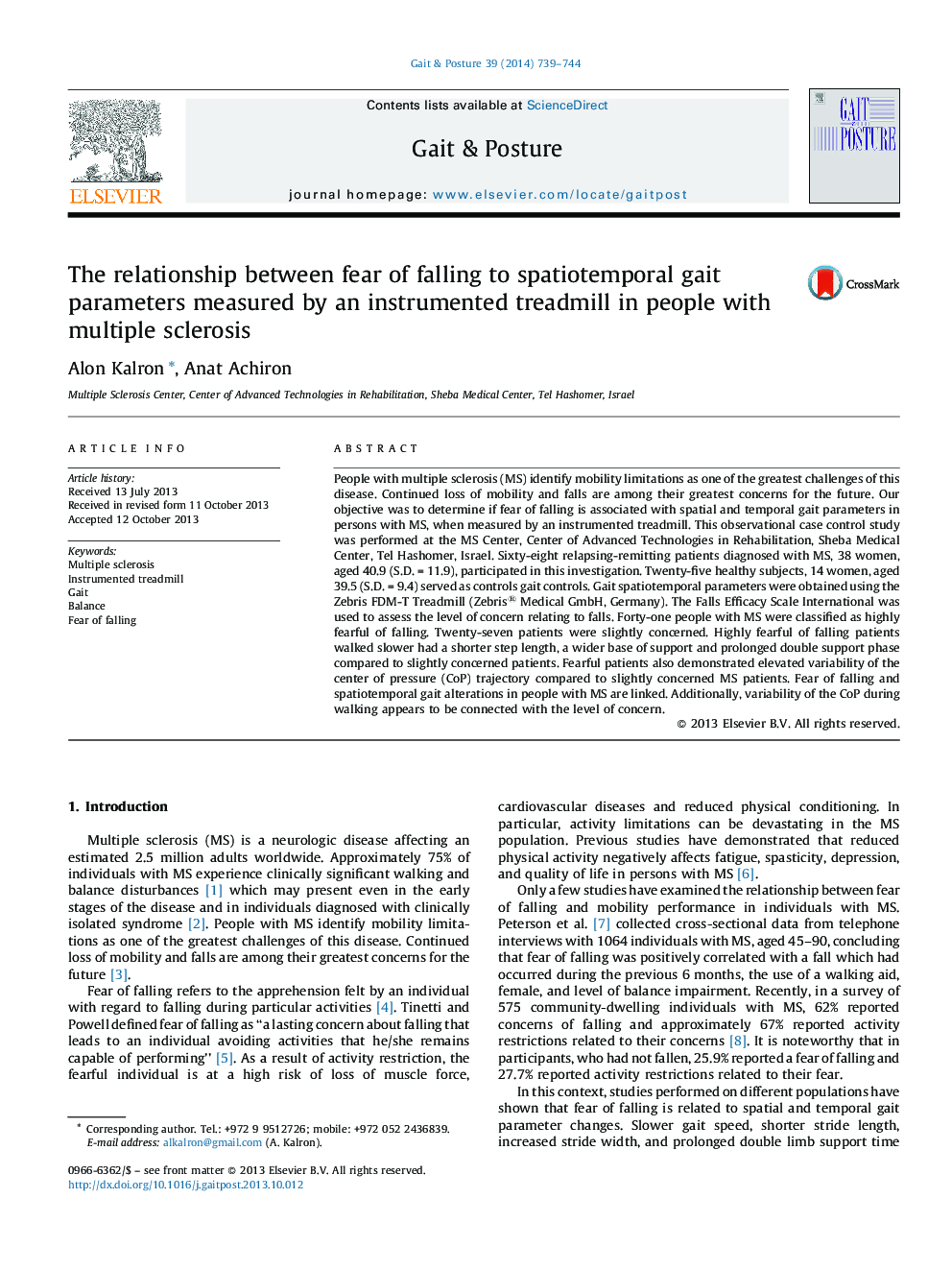| Article ID | Journal | Published Year | Pages | File Type |
|---|---|---|---|---|
| 6206384 | Gait & Posture | 2014 | 6 Pages |
â¢Fear of falling is related to spatial and temporal gait parameters in people with MS.â¢Fearful patients demonstrated a larger variability of the CoP trajectory during gait.â¢CoP variability in the lateral plane was significantly correlated to fear of falling.
People with multiple sclerosis (MS) identify mobility limitations as one of the greatest challenges of this disease. Continued loss of mobility and falls are among their greatest concerns for the future. Our objective was to determine if fear of falling is associated with spatial and temporal gait parameters in persons with MS, when measured by an instrumented treadmill. This observational case control study was performed at the MS Center, Center of Advanced Technologies in Rehabilitation, Sheba Medical Center, Tel Hashomer, Israel. Sixty-eight relapsing-remitting patients diagnosed with MS, 38 women, aged 40.9 (S.D. = 11.9), participated in this investigation. Twenty-five healthy subjects, 14 women, aged 39.5 (S.D. = 9.4) served as controls gait controls. Gait spatiotemporal parameters were obtained using the Zebris FDM-T Treadmill (Zebris® Medical GmbH, Germany). The Falls Efficacy Scale International was used to assess the level of concern relating to falls. Forty-one people with MS were classified as highly fearful of falling. Twenty-seven patients were slightly concerned. Highly fearful of falling patients walked slower had a shorter step length, a wider base of support and prolonged double support phase compared to slightly concerned patients. Fearful patients also demonstrated elevated variability of the center of pressure (CoP) trajectory compared to slightly concerned MS patients. Fear of falling and spatiotemporal gait alterations in people with MS are linked. Additionally, variability of the CoP during walking appears to be connected with the level of concern.
